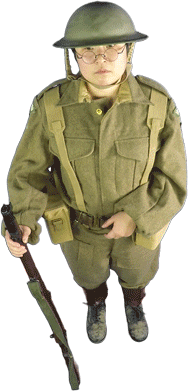![]() You don't need to be an 'investor' to invest in Singletrack: 6 days left: 95% of target - Find out more
You don't need to be an 'investor' to invest in Singletrack: 6 days left: 95% of target - Find out more
On the face of it this seems simple but it doesn't appear to be when i look up the detail. I can't work it out from the thermodynamics at this time of day.
If I have a lump of metal (sphere) how fast will it cool to reach the temperature of its surroundings. e.g 50C to 10C
How much will the time taken to reach equilibrium change if the metal starting temperature remains constant but the surrounding temperature changes.
e.g. 50C to 0C, 50C to 20C
I'd like some graphs for steel - is this kind of thing tabulated anywhere online? Strikes me as the kind of thing that would be but I can't find it.
Not really, it would depend on the surroundings, is there any wind, how big is the room (does the room heat up, does it setup a circulating convection current), what is the relative or absolute humidity of the room.
If you know the velocity of the air and the properties of the surface you can calculate the heat loss off a flat surface, anything else is going to involve assumptions and some CFD.
That's a bit complicated from a physics point of view. Loads of variables. You could easily calculate how much heat it has, but the problem is calculating the conductivity across the boundary. Most of the heat lost to surrounding air will be due to convection IIRC and that's tricky.
You'd probably need some kind of engineering ready-made graph or something.
Ah, here's some info
https://en.wikipedia.org/wiki/Convective_heat_transfer
So what you need is the heat transfer coefficient between steel and air.
Here, [url= https://www.amazon.co.uk/Thermodynamics-Engineering-Approach-Yunus-Cengel/dp/0073398179/ref=sr_1_1?ie=UTF8&qid=1509550574&sr=8-1&keywords=thermodynamics+an+engineering+approach ]have a link to a way of working this out[/url]. You can either read it, or use it to beat yourself repeatedly around the head as you try to work out where the boundary is going to be: the air, the table its on, next door's kitchen...
I used to be able to do the calcs for this. I pushed that knowledge away a long time ago.
https://en.wikipedia.org/wiki/Heat_transfer_coefficient
A read of that might help figure out the coefficient.
[url= http://hyperphysics.phy-astr.gsu.edu/hbase/thermo/cootime.html#c2 ]Oh christ someone wrote an applet for this?[/url]
This is going to be a bit like the fridge with the door open in a perfectly sealed room. Does it get hotter or colder. Assume the conveyor belt does not affect temperature.
I'll take a sphere of brass in an inert pure gas with no air flow if that helps.
I think I might measure it... I have some lumps of steel data loggers and a thermatron.
hot_fiat - MemberOh christ someone wrote an applet for this?
I'll name you in my nobel prize acceptance speech!
On a related note have you read Randall Munroe's problem about the hairdryers in the box and their heat loss?
That only deals with radiation losses, which I'm hypothesising will be smaller than the convection losses, otherwise a thermos flask wouldn't work.I'll name you in my nobel prize acceptance speech!
If it were 1200C in a vacuum you'd be right.
I had a similar issue for a project at uni, where I was trying to calculate how long it would take for a droplet of molten wax to solidify when sprayed into a fluidised bed. As far as I could tell there was no analytical solution. I ended up using a numerical solution dividing the droplet into several layers and calculating the heat balance for each one at small time steps.
I think feynman said it's impossible to accurately calculate the temperature a cup of coffee will be in 5 minutes but easy in an hour.
Because of the complex heat transfer. But in an hour it's done and is at ambient temp.
The object will NEVER reach the same temperature as its surroundings!!
